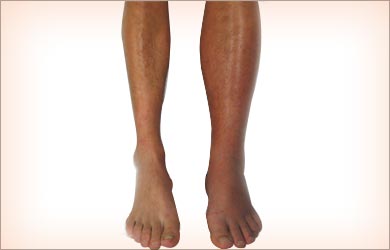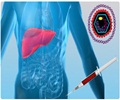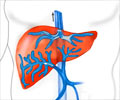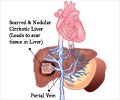Types of Ascites
Ascites is categorized into the High and Low Albumin Gradient types, with increased and normal portal pressure, respectively. Five percent patients have Mixed Ascites. Less than 10% patients with cirrhosis have Refractory Ascites.
The fluid accumulated in ascites used to be classified as 'Exudate' and 'Transudate' in the past depending on the protein content of the ascitic fluid. Exudate had a protein content of ≥ 2.5g/dl while Transudate had a protein content of < 2.5g/dl.
A better, more useful way to categorize ascites is by using the SAAG ( Serum-ascites albumin gradient). This is the difference between the albumin concentration of ascitic fluid and the albumin concentration of serum obtained on the same day. Thus we have:
- High Albumin Gradient
- Low Albumin Gradient
- Mixed Ascites
High Gradient SAAG ≥ 1.1 means the patient has portal hypertension. Causes include-
- Cirrhosis
- Alcoholic Hepatitis
- Cardiac Ascites
- Massive liver metastases
- Fulminant hepatic failure
- Budd Chiari syndrome
- Portal vein thrombosis

- Venoocclusive disease
- Myxedema
- Fatty liver of pregnancy
- Mixed Ascites
Low Gradient SAAG <1.1 means the patient has normal portal pressure. Causes include-
- Peritoneal carcinomatosis
- Tuberculous peritonitis
- Pancreatic ascites
- Biliary ascites
- Nephrotic Syndrome
- Serositis in connective tissue disorders
Mixed Ascites
This is due to two different causes including one which causes portal hypertension.
Refractory Ascites
This is defined as fluid overload in patients who do not respond adequately to standard medical therapy.













